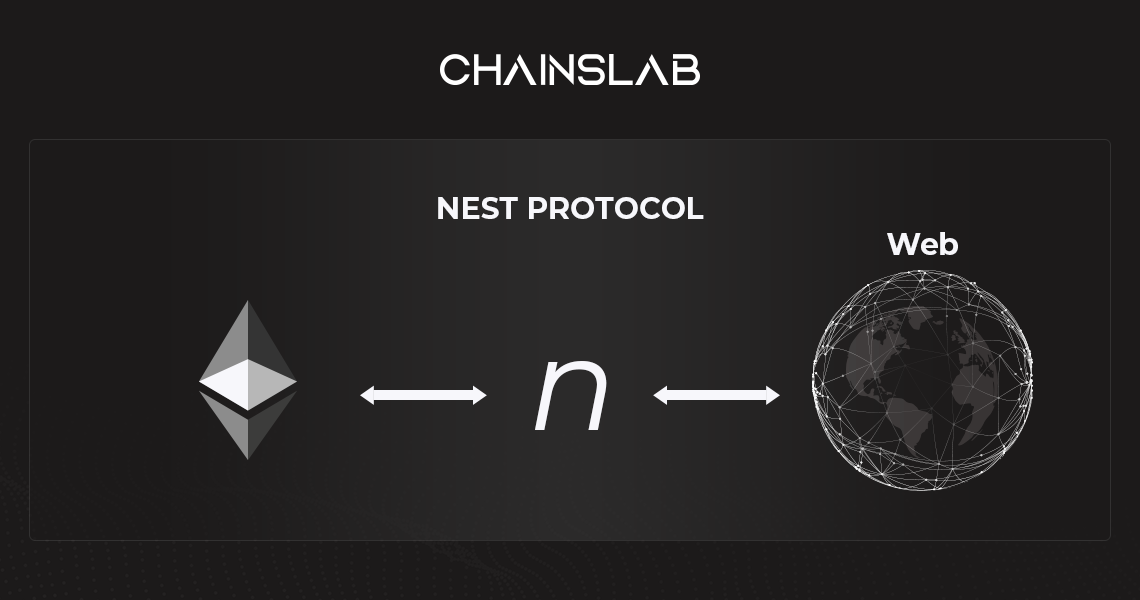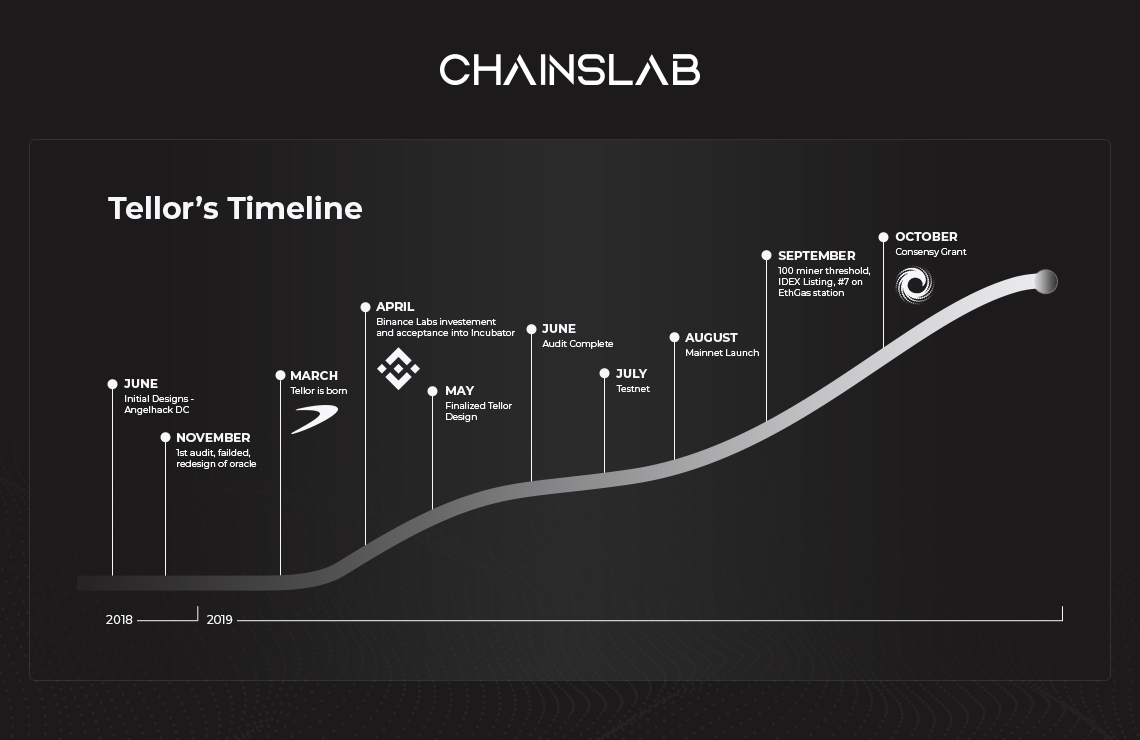Oracles is the most important bridge to bring Blockchain to real life
I. Market Context
At the time when both Blockchain industry and DeFi are catching lots of attention from the whole world, there is an urgent need: How to prove the usefulness of Blockchain technology to the world.
There are many people who think that apart from Bitcoin, Blockchain has no value at all. Even with Bitcoin, its application is still very limited. Currently, from the writer’s point of view, the most prominent application of Crypto is Smart Contract. It is the Smart Contract that makes the process of automating and decentralizing industries easier.
But Smart Contract also has a huge problem, which is it needs data to work. The data that Smart Contract needs often comes from outside the Blockchain. And to get it, Smart Contracts need Oracles.
II. Definitions
Oracles is a kind of software (or sometimes hardware). It’s responsible for receiving and validating data from the outside into Blockchain and Smart Contracts by using methods such as APIs or market data.
We know that Smart Contracts are computer software systems that are capable of processing automatically each time a certain condition is met. For example, when you put 10,000 VND in a vending machine, it will automatically give you 1 can of water. With Smart Contracts, when you perform an action A with an existing contract, Smart Contracts will automatically execute clause B written in the contract.
Or, it can be understood by imaging that there is a smart contract for whether Trump or Biden will be elected president of the United States. People deposit money into this smart contract to bet on who will win the election. When the election results are announced, the contract will take the money of the loser to give to the winner. However, Blockchain must take the results of the election from the outside world. And that responsibility will be on Oracles.
By bringing information from the real world into the virtual world, Oracles allow programmers to create a variety of smart contracts, making Blockchain applicable to the real world. If a smart contract needs to know whether it rains on Tuesday, or what the current gold price is, Oracles will be responsible for showing that information to the Blockchain.
And now, DeFi is one of the waves that need Oracles the most. To work properly, DeFi needs a lot of data. Applications like derivatives/margins DEXes, insurance, trading, require external data to work. From volume to price, Blockchain itself cannot “get” that data. If an asset/pair traded on a DEX needs to display the price, Oracles will provide price data taken from the CEX exchanges. And sometimes, the value of Blockchain and Smart Contract depends a lot on the accuracy and timeliness of the data it receives.

For example, when the data is wrong, the smart contract will simply have no value. If the smart contract about the presidential election that I mentioned above fails to update or update the wrong person elected as the US president, many people will lose money unjustly and the consequences will be very serious. That's why Oracles is becoming increasingly important to projects day by day. And because of that, more and more new Oracles projects are born. The table below lists some potential Oracles projects in the current period.
III. Projects
Chainlink (LINK)
LINK is a pioneer in Blockchain Oracles projects. Chainlink is currently the leader, as well as the strongest, simply for two reasons:
- They were the first to develop Oracles so powerful that most big projects are using Chainlink's technology.
- Their products are good and reliable.
In the past 2 years, Chainlink has had a relatively strong development, both in technology and price, so that LINK is currently one of the top 10 coins in Coinmarketcap. Currently, LINK's important partnerships include many reliable names in the market such as Kyber Network, Synthetix, SWIFT, Binance, etc.
For example, Binance currently is using Chainlink to help DeFi applications access the data available on Binance/Binance Chain. With Binance being the platform with the highest liquidity in the Crypto world, the price, volume, etc. sent from Binance is highly accurate. On the contrary, Binance will benefit as they will expand their influence throughout the DeFi market.
The Chainlink's technology works as follows:
First, their nodes get data from 3rd parties from multiple sources to make comparisons between different data sources. The system will then start comparing data sources to remove false/incorrect data.
Despite being a pioneer, LINK is also facing a lot of competition from its competitors. This is very common in the Blockchain world, one of the places where technological innovation happens at an unprecedented rate. The story of a technology innovation being in the top 10 in the first year then being kicked out of it the next year happens regularly .And one of the most prominent competitors of LINK in this year is BAND - the project that has an impressive growth rate in 2020: more than 9000%.
Band Protocol.
While the majority of Oracles projects are currently running on Ethereum, Band Protocol runs on Cosmos - the Internet Blockchain. BAND describes itself as a cross-platform Oracles, which is capable of connecting data from the real world into smart contracts.
Because of this ability, BAND is one of the fastest growing projects in 2020, with an increase of nearly 100 times. The reason is simply because DeFi growth needs cross-chain data, and BAND can meet DeFi projects’ demand. While Chainlink is focusing on the top Coinmarketcap Blockchain projects like ETH, BAND is built on Cosmos to reach smaller Blockchain projects, enabling them to link together more easily.
However, one of the things that BAND and Tendermint technology on Cosmos has to trade off is that it does not require nor allow information from Oracles to be able to "communicate" with the protocol. Instead, the information and data on BAND's Oracles will automatically be deemed correct, and will be re-audited later.
This happened because BAND omitted the data checking step in order to boost the speed of its Oracles. In the long run, this is not good, and the BAND team understands that very well. Therefore, they will have some corrections in the future.
We also have a detailed article about Band Protocol's technological features.
In general, BAND is one of the projects that are competing fiercely with Chainlink to enter the top 10 of CoinMarketCap. However, it doesn’t mean that there aren’t other projects trying to do the same. Nest Protocol is an example.
Nest Protocol (NEST)
Nest calls itself the first network of Oracles to produce and verify price data right at the time of being on-chain. The special feature of NEST is that it focuses on the array of price data, and NEST serves the goal of bringing price data to the DEX in the fastest and most accurate way.

In the projects I mentioned in this article, Nest is currently the youngest one, so it has received little attention from Crypto world. However, NEST is currently attracting a lot of attention from the Oracles market. Nest's strengths lie in its good technology backed up by a relatively talented team, and high decentralization.
Basically, the idea of the project is quite crazy and Nest is also a partner of HBTC - a Crypto exchange of Huobi’s former CTO. Perhaps that is why Nest is active mainly in China. In the future, Nest will be one of the strongest competitors if they decide to expand to the global market.
Chainslab Research will have a technical analysis article of Nest in the near future.
Tellor (TRB).
Tellor is a project with the ambition to become the standard of high-value data for dApps (decentralized applications). More specifically, Tellor aims to provide valuable pricing data for DeFi projects. If you are a part of Tellor's network, you will receive TRB tokens as a reward.
In terms of tokenomics, I rate TRB the highest among the tokens mentioned in this article. Users can stake and mine based on TRB's PoW mechanism to receive TRB tokens.
Therefore, TRB is sponsored by many Blockchain investment funds/organizations such as Binance Finance Labs, MakerDao and Concensus.

Built on Ethereum's Blockchain, TRB's decentralization is relatively high. By canceling the admin key last October and handing governance into the hands of the community, their governance mechanism becomes decentralized.
https://medium.com/tellor/goodbye-admin-key-hello-decentralized-governance-6e4f7ca969a5
Tellor's products

Chainslab Research will have an analysis article of Tellor in the near future
DIA
DIA, short for Decentralized Information Asset, is a project focused on providing a variety of information to the DeFi world. They aim for standards, including accuracy, censorship, and decentralization. And because of its focus on DeFi, DIA undoubtedly attracted a lot of attention from investors this year.
However, the interesting thing about DIA is that this project has promptly launched products aimed at the traditional financial market, more specifically FX and bank lending rates. In the long-term future, DIA plans to become a data delivery platform for both centralized and decentralized finance.
The basic difference of DIA from the projects mentioned above is that it focuses on sharing financial data with the Blockchain world, including valuable and well-protected data/information.
Chainslab will have a research article on DIA in the near future.
IV. Conclusion
Although Chainlink is the frontrunner, it is facing a lot of rivals in the Blockchain world. And although there are many similarities, the interesting thing about the Oracles projects that I listed above is that most of them have their own value proposition, targeting a certain gap that LINK has not yet reached.
For example, we have BAND built on Blockchain Cosmos, or NEST aimed specifically at the Chinese market, where people always favor domestic goods.
In general, most Oracle projects in the future aim to build Transparency and Decentralization, as well as applying in DeFi, which is an indispensable goal of Oracle projects in the future. With Oracles’ growth, in my personal opinion, DeFi will thrive in the future when data from traditional financial markets will be included in DeFi, and the day of financial revolution seems to be closer.
And of course, the pie is still very big, so there will be many interesting and potential Oracles projects to launch in the future. This article will also be updated regularly according to the market rhythm, so don’t forget to bookmark it and follow Chainslab to capture all the information about the Crypto market!
